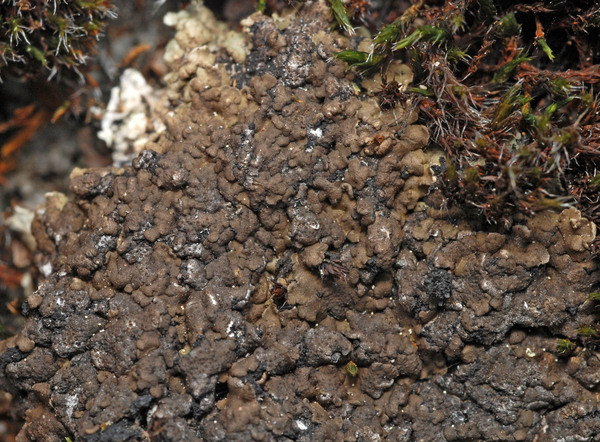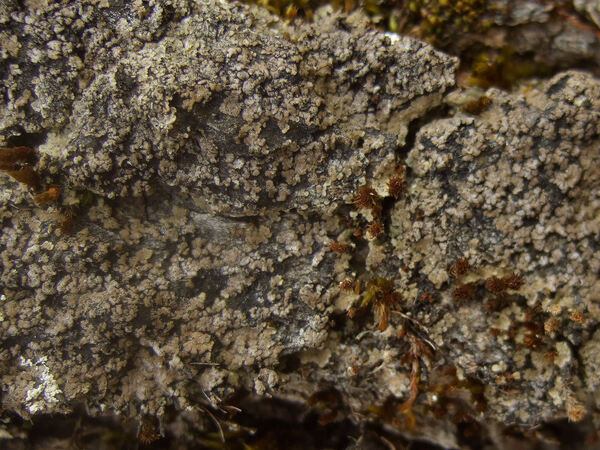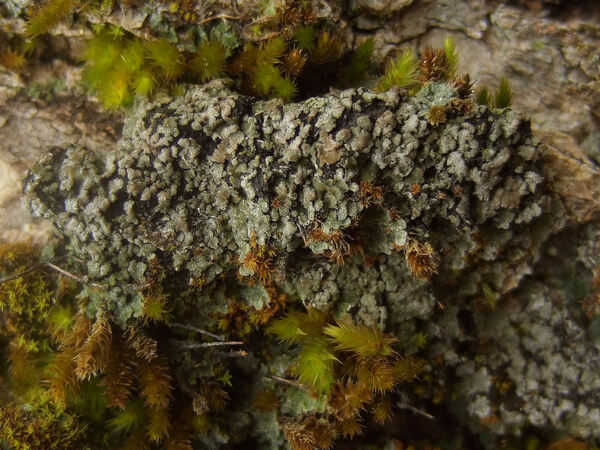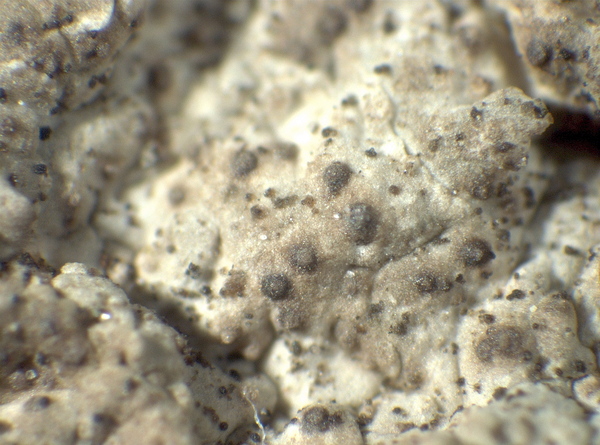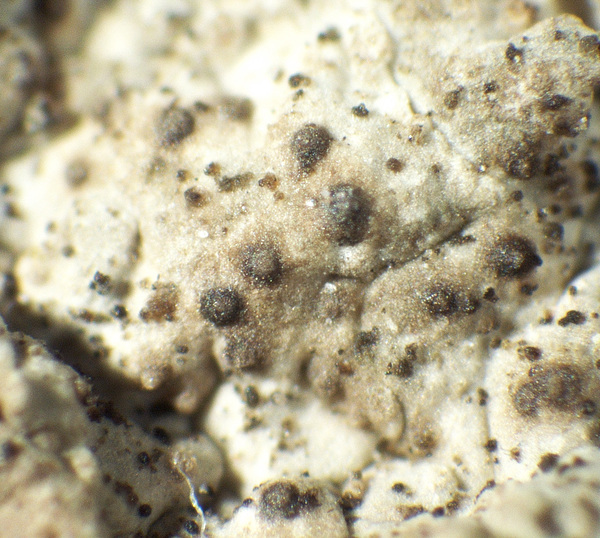Catapyrenium psoromoides (Borrer) R. Sant.
in Hawksworth & al., Lichenologist, 12: 106, 1980. Basionym: Verrucaria psoromoides Borrer in Hooker & Sowerby - Engl. Bot. Suppl. 1, tab. 2612, fig. 1, 1831.
Synonyms: Dermatocarpon daedaleum f. pruinosum Vain.; Dermatocarpon daedaleum var. corticola H. Magn.; Dermatocarpon psoromoides (Borrer) Dalla Torre & Sarnth.; Placocarpus psoromoides (Borrer) Trevis.; Verrucaria psoromia Nyl.
Distribution: N - VG (TSB 20351), Frl (Tretiach & Carvalho 1995), TAA (Nascimbene & al. 2007b), Lomb, Emil (Gasparo & Tretiach 1996, Nimis & al. 1996, Fariselli & al. 2020), Lig (Brunialti & Giordani 2003). C - Tosc, Marc (Frati & Brunialti 2006, Caporale & al. 2008, Brackel 2015), Laz (Fornasier & al. 2005), Abr (Recchia & al. 1993, Olivieri & al. 1997, 1997b), Mol (Frati & al. 2004, Caporale & al. 2008, Caporale & Ravera 2020), Sar (Zedda 2002b). S - Si (Ravera & al. 2023b)
Description: Thallus squamulose, grey to greenish brown, sometimes spottily pruinose in the distal parts of squamules. Squamules 1-3 mm wide, 0.14-0.33 mm thick, dispersed or more frequently contiguous to slightly imbricate, rather loosely attached, entire or divided, the lower surface with a blackish-brown rhizohyphal web. Upper cortex thin, paraplectenchymatous, of (4-)19(-10) μm wide cells, with an up to 15 thick epinecral layer; algal layer poorly delimited from upper cortex; medulla of loose hyphae with many spherical cells and distinct interhyphal spaces; lower cortex absent, the medulla gradually merging into a dark mat of rhizohyphae, the latter 3-4 μm thick, brown to black. Perithecia to 0.2 mm wide, pyriform, without involucrellum, the exciple hyaline or pale yellowish-brown, except near the dark ostiole; periphyses rather short (to 30 μm long), often with somewhat swollen apical cells. Asci 8-spored, unitunicate, clavate, thin-walled, not or only slightly thickened at apex, without ocular chamber, the wall I-. Ascospores 1-celled, biseriate, ellipsoid to subfusiform, 12-19 x 5-7.5 μm. Photobiont chlorococcoid. Spot tests: cortex and medulla K-, C-, KC-, P-, UV-. Chemistry: without lichen substances.Note: a mild-temperate, probably holarctic lichen found on the base of old trees, especially on rough bark in parklands and open woodlands, occasionally on epiphytic bryophytes, very rarely on epilithic mosses, with optimum in the submediterranean belt. It is included in the Italian red list of epiphytic lichens as “Near-threatened” (Nascimbene & al. 2013c).
Growth form: Squamulose
Substrata: bark
Photobiont: green algae other than Trentepohlia
Reproductive strategy: mainly sexual
Commonnes-rarity: (info)
Alpine belt: absent
Subalpine belt: absent
Oromediterranean belt: absent
Montane belt: extremely rare
Submediterranean belt: very rare
Padanian area: absent
Humid submediterranean belt: very rare
Humid mediterranean belt: extremely rare
Dry mediterranean belt: absent

Predictive model
Herbarium samples
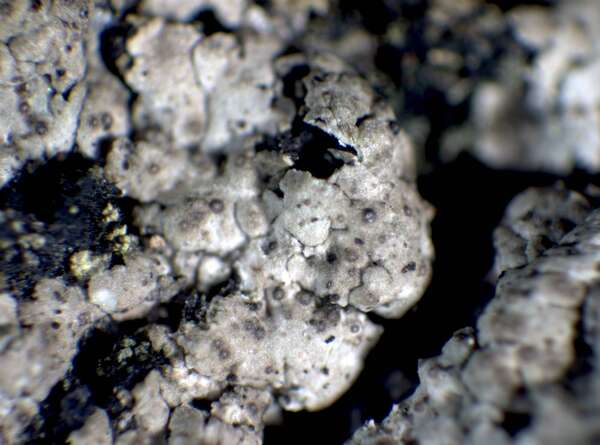

P.L. Nimis; Owner: Department of Life Sciences, University of Trieste
Herbarium: TSB (17935)
2001/11/22
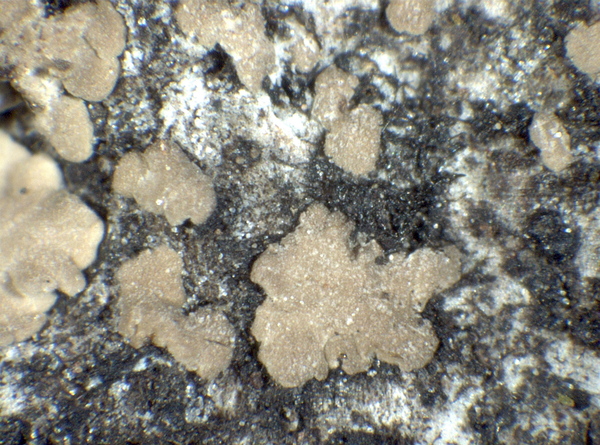

P.L.Nimis; Owner: Department of Life Sciences, University of Trieste
Herbarium: TSB (20351)
2008.03.06
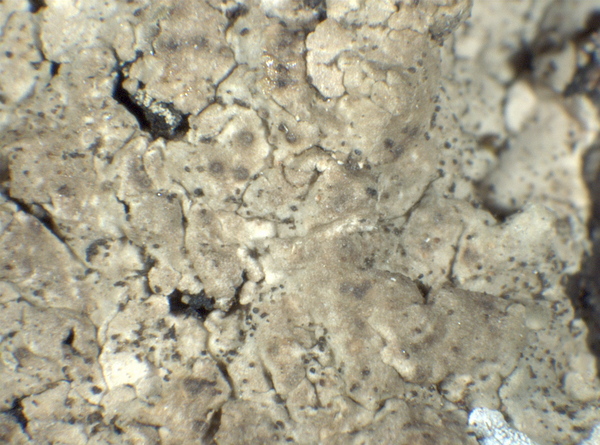

P.L.Nimis; Owner: Department of Life Sciences, University of Trieste
Herbarium: TSB (15305)
2008.03.06
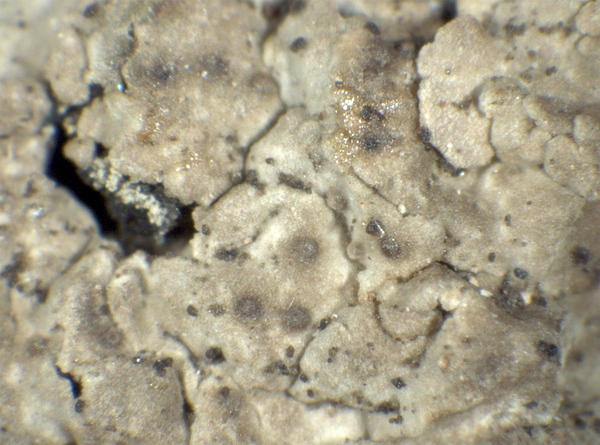

P.L.Nimis; Owner: Department of Life Sciences, University of Trieste
Herbarium: TSB (15305)
2008.03.06
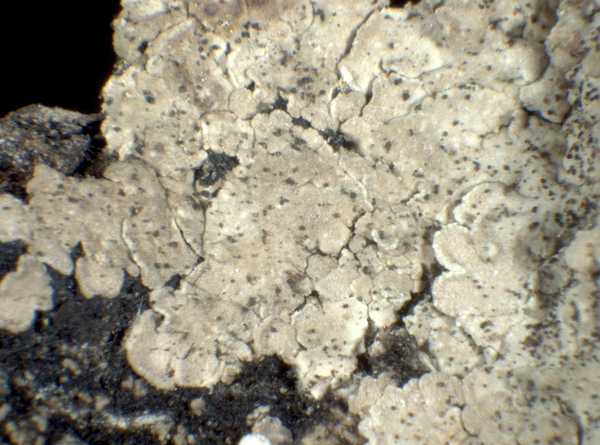

P.L.Nimis; Owner: Department of Life Sciences, University of Trieste
Herbarium: TSB (15305)
2008.03.06
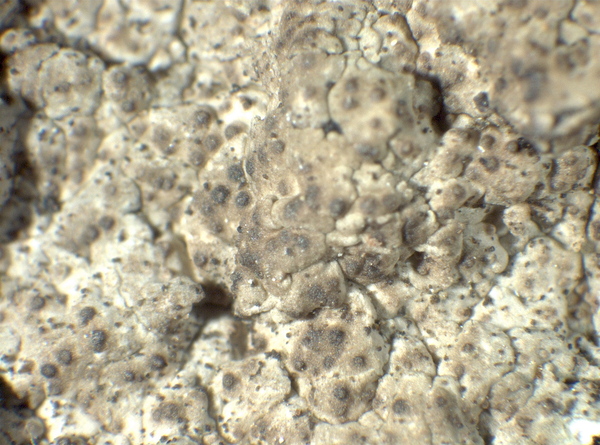

P.L.Nimis; Owner: Department of Life Sciences, University of Trieste
Herbarium: TSB (15305)
2008.03.06
Growth form: Squamulose
Substrata: bark
Photobiont: green algae other than Trentepohlia
Reproductive strategy: mainly sexual
Commonnes-rarity: (info)
Alpine belt: absent
Subalpine belt: absent
Oromediterranean belt: absent
Montane belt: extremely rare
Submediterranean belt: very rare
Padanian area: absent
Humid submediterranean belt: very rare
Humid mediterranean belt: extremely rare
Dry mediterranean belt: absent

Predictive model
| Herbarium samples |


P.L. Nimis; Owner: Department of Life Sciences, University of Trieste
Herbarium: TSB (17935)
2001/11/22


P.L.Nimis; Owner: Department of Life Sciences, University of Trieste
Herbarium: TSB (20351)
2008.03.06


P.L.Nimis; Owner: Department of Life Sciences, University of Trieste
Herbarium: TSB (15305)
2008.03.06


P.L.Nimis; Owner: Department of Life Sciences, University of Trieste
Herbarium: TSB (15305)
2008.03.06


P.L.Nimis; Owner: Department of Life Sciences, University of Trieste
Herbarium: TSB (15305)
2008.03.06


 Index Fungorum
Index Fungorum
 GBIF
GBIF

